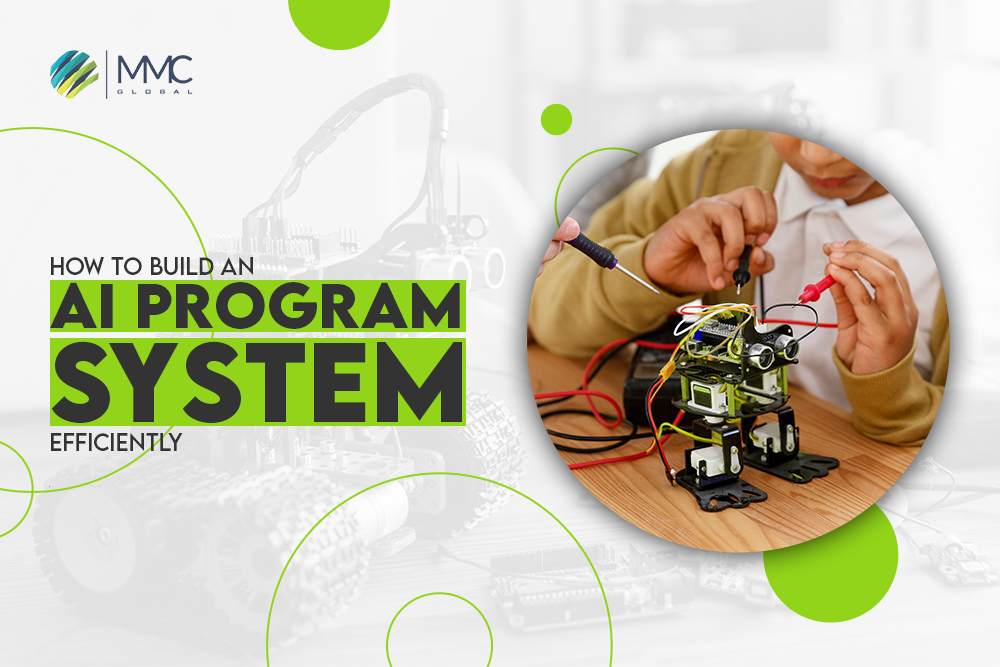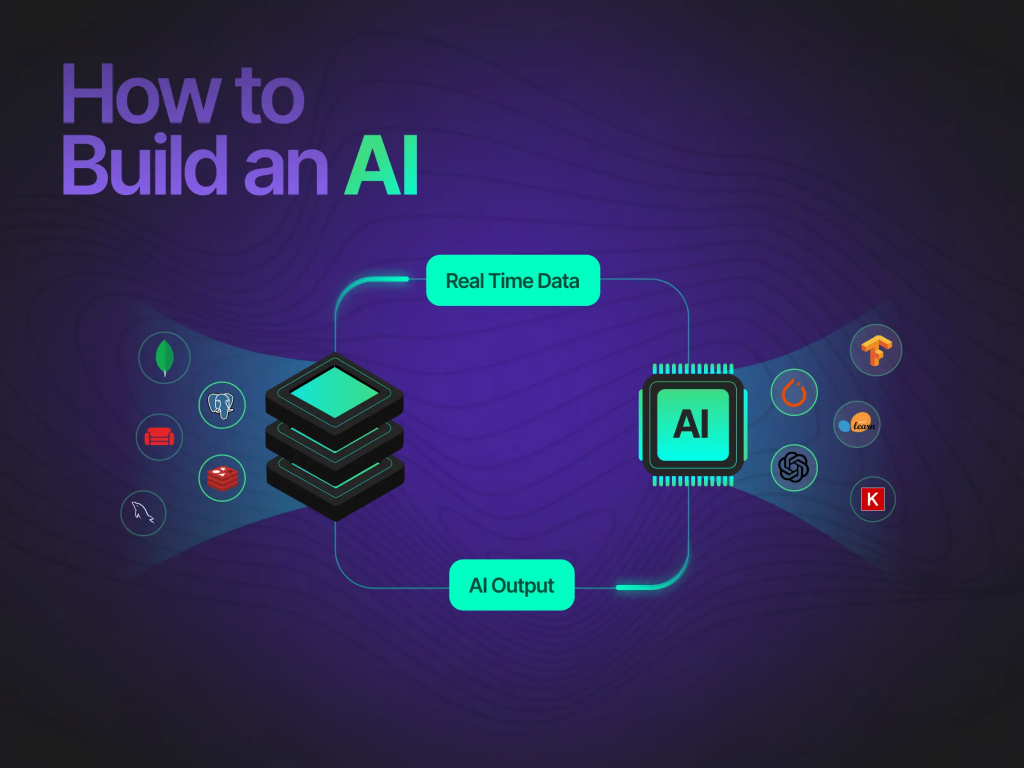How To Build an AI Program System Efficiently


Artificial Intelligence (AI) stands out as a groundbreaking innovation in the rapidly evolving world of technology. Crafting an AI program system can seem daunting, but it’s achievable in five straightforward steps. This blog will guide you through each phase, ensuring you can develop your own AI program efficiently.
Before learning those magical five steps, let’s start with the AI to help you understand more about it.

What is an AI Program System?
An AI (Artificial Intelligence) program system refers to a complex software setup that uses AI techniques to simulate human intelligence and perform tasks that typically require human cognitive functions. In addition, these systems are designed to process, analyze, and respond to data inputs in a manner that mimics human thought processes. Key characteristics and components of an AI program system include:
Data Processing and Analysis
At its core, an AI system processes and analyzes large amounts of data. It identifies patterns, makes predictions, or generates recommendations based on this data.
Machine Learning Algorithms
Most AI systems use machine learning algorithms, which enable them to learn from and adapt to new data without being explicitly programmed for each task. Moreover, these algorithms can include supervised, unsupervised, and reinforcement learning.
Natural Language Processing (NLP)
Many AI systems have components that understand, interpret, and generate human language, enabling them to communicate with users or process textual data effectively.
Neural Networks
Advanced AI systems often utilize neural networks, algorithms modeled after the human brain, to perform complex tasks like image as well as speech recognition.
Automation and Decision Making
AI systems can automate tasks, from simple repetitive tasks to complex decision-making processes, by analyzing data and making determinations or predictions based on that data.
Adaptability and Learning
A defining feature of AI systems is their ability to learn from experience. Over time, they can improve their performance and make more accurate predictions or decisions.
Integration with Other Technologies
AI program systems often integrate with other technologies and platforms, such as IoT (Internet of Things) devices, cloud computing, and big data systems, to enhance their capabilities.
AI program systems are applied in various domains, including healthcare (for diagnostics and personalized medicine), finance (for fraud detection and risk management), transportation (in autonomous vehicles), and customer service (through chatbots and virtual assistants). The ultimate goal is to create systems that can perform tasks as well as or better than a human in a more efficient, cost-effective, and accurate manner.
[Nasir-hu-mein heading=”Proficient In Building AI Program System” para=”We are committed to providing immersive, cutting-edge AI solutions by AI engineers to make your business compatible in this competitive world.”]Steps Taken For Building AI Program System
Define Project Goal
Elaborating on the project’s goal gives you a roadmap to initiate a project with clarity. The project goal must contain proper guidelines and extensive information to achieve your goals. Moreover, setting project goals before initiating the project helps you to allocate resources and investment profitably. This also involves understanding the needs and challenges of the target domain and determining how AI can provide a solution with the limitations of current AI technology, the capabilities required for the project, and the scale at which the system needs to operate.
Gather & Prepare Data
Data is the foundation of the AI program system. The scope of data plays a crucial role in building the baseline of AI-powered projects. However, the quality and quantity of data directly affect the performance of the AI model. The more data is fed, the more powerful your application software will be. Data can come from various sources, including public datasets, proprietary data, or data generated through simulations. Moreover, data cleaning and preparation are critical steps in the AI process. It also involves handling missing values, removing duplicates, and transforming data into a format suitable for analysis. To ensure data quality, issues include privacy concerns, data security, and ensuring the data is representative and unbiased.
Choose The AI Model
With the innovation of AI, there is an enormous list of AI models that you can use to build an AI program system. Almost 10 popular AI models exist, including linear regression, deep neural networks, logistic regression, decision trees, learning vector quantization, naive Bayes, support vector machines, etc. The choice of an AI model depends on factors like the desired accuracy, computational efficiency, and the complexity of the problem. Each AI model has its pros and cons. For instance, neural networks are powerful but require large amounts of data.
On the other hand, decision trees are simpler but might not capture complex patterns. So, you must be very careful while choosing an AI model whether that can fulfill your expected requirements or need additional customization to support your computational efficiency.
Train Your AI Model
AI transforms the way of thinking and making decisions, from shifting unperceptive perception to insightful predictions. It all happens by training datasets with specific patterns so that AI can make decisions. AI algorithms must train for best and worst situations with logical reasoning. Furthermore, AI has the capability to study those patterns. If AI notices unusual behavior patterns, it helps you generate data-driven outcomes for the specific task. Model performance is optimized and evaluated using techniques like cross-validation and metrics such as accuracy, precision, and recall. Common challenges include overfitting, underfitting, and ensuring the model generalizes well to new data.
Final Deployment Of The Product
AI program system implementation involves integrating the AI model into the existing systems and workflows. The AI should be integrated to handle tedious tasks, automate machines, make recommendations, etc. The final stage also includes proper testing and fixing if any error occurs. Testing methodologies include unit, integration, and system testing to ensure the model’s performance and reliability. After initial testing, the model may require fine-tuning and iterative improvements based on feedback and performance metrics. Deployment considerations include scalability, maintainability, and integration with other systems.
Conclusion
AI program systems are applied in various domains, including healthcare (for diagnostics and personalized medicine), finance (for fraud detection and risk management), transportation (in autonomous vehicles), and customer service (through chatbots and virtual assistants). The ultimate goal is to create AI program systems that can perform tasks as well as or better than a human in a more efficient, cost-effective, and accurate manner. By following the above steps, you can introduce a well-established AI program that meets your needs.



